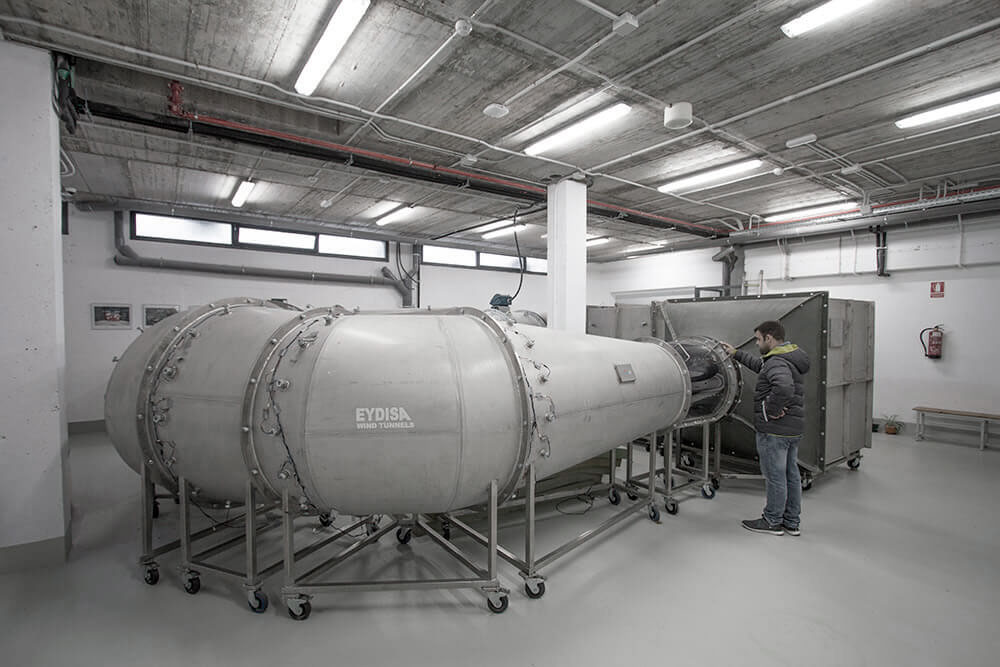
Superior Schematics
We create innovative and high quality wind tunnels.
EYDISA WIND TUNNELS has invested nearly one million euros in research and development.
Other existing manufacturers to date have used computer programs to design their tunnels and simulate air flow efficiency. But as NASA knew when they invented the first vertical wind tunnel: a computer program cannot flawlessly replicate real aerodynamic forces. It can only estimate approximations, which sometimes isn't good enough. And for EYDISA, that wasn't good enough.
EYDISA built the largest wind tunnel prototype to date, on a 1:5 scale of the initial wind tunnel design. The prototype flight chamber is about 1m wide and the produced wind speeds reach up to 310 km/h.
Development in 3 phases
For each aspect of our wind tunnels, all the designs must pass through three phases:
Research
The latest technology is analysed and evaluated by EYDISA and Alberto Fuertes, as well as other experienced engineers, flyers, wind tunnel staff and owners. This round of discussion and brainstorming allows for substantial improvements to be proposed and incorporated.
Design
Our engineers design the parts and run them through multiple tests, using computer software. The software helps to determine whether certain aspects of the design need improvement until optimal results are obtained.
Test and Calibration
The final computer design gets built and placed in the prototype, allowing the wind speed variations to be measured in a real environment. Adjustments are made to examine if further improvements are possible, and once the best possible design is achieved, it gets approved for construction.